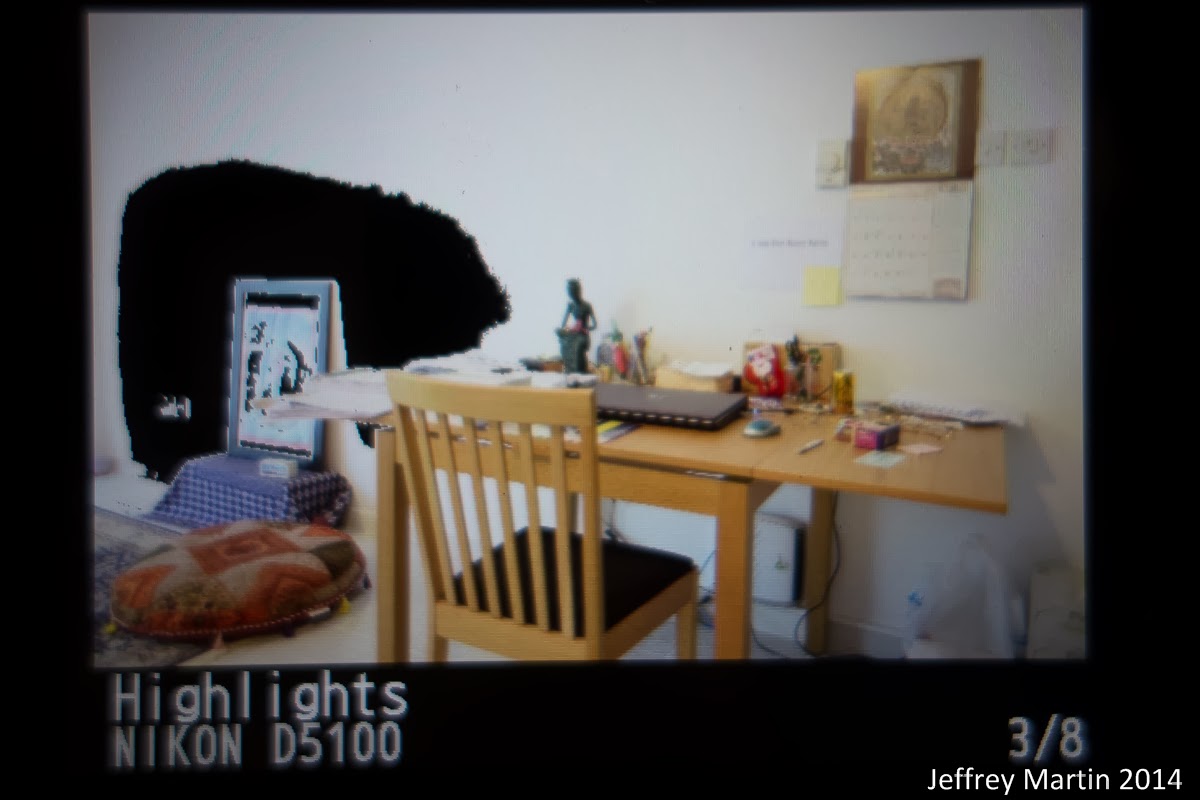The brief calls for finding the exposure settings at which highlight clipping first appears in a contrasty scene (some light and dark elements), then shooting one image one-step higher, followed by three images each one step lower than the preceding.
Simple as it seems, I am having some difficulty. What my Sony RX100 and Lightroom tell me are not the same.
This is a rather poor capture from my iPad, but it serves the purpose as it shows the camera reading a large area of highlight clipping on the left near a window. This flashes black in camera. Note that the histograms show minimal clipping in blue. Also note that this is not a live view available while shooting, but viewable only after capture.
Lightroom shows only a tiny bit of clipping in the glass of the framed painting. (Images were captured in RAW and the only adjustment made in LR was auto-WB.)
The image as exported to JPG from LR.
In another set, we see the same effect. Here the camera shows almost the entire image as blown out. Unlike the previous image, in this one every histogram shows severe clipping.
But in Lightroom, no clipping at all.
The image as exported to JPG from LR.
I'm a bit confused as to why this is happening. Is LR doing something to the image, or has the camera software been designed to be over-protective?
I would like to see if this is reproducible on my Nikon D5100. In the meantime, if anyone reading this has any insight I would be very happy to hear from you.
#
After posting the above I went over the OCA Photography blog to inquire about what might be going on here. I'll get to that in a minute. The weekend and a comping trip intervened, and here I am now with results from my Nikon D5100.
Similar results were produced in the Nikon with the second set-up.
Over at the OCA forums the response was one of, well, look at what you've learned! Which is true enough. Another poster recalled that the LCD warnings are based on a in-camera JPG and often calculated to blink before actual clipping occurs. It was also proposed that the assignment brief was composed when software was not as adept at processing RAW data. Other students recalled similar outcomes from their own experiments, including Chris', documented here.
The lesson here, then, is that the camera's software has been designed to lead the operator to produce slightly under-exposed images. When the camera starts to say "too much," you can in fact push it just a little bit further.
#















No comments:
Post a Comment